The 5-day fast is a "shock" nutritional methodology that can boost weight loss . Many cultures around the world use prolonged fasting for religious reasons, for example. But what if we told you that fasting is even a natural and normal state of human beings since our origins? Learn all about fasting and the benefits of this practice.
Did our ancestors fast for 24 hours? A review of our history...

How difficult is it for you to get food today? How long does it take you to get food? About 10 minutes to fill a basket in any supermarket! And what do you do when you're hungry? You go to the refrigerator, or open the pantry, and the food you want is at your entire disposal. Today, fasting seems unthinkable to us. We eat when we are hungry or following a stipulated daily schedule. But has this always been like this?
The state of intermittent fasting was normal in prehistory, when human beings were hunter-gatherers. Before, we didn't have such easy access to food. Food had to be searched, collected, hunted, fished... This required daily physical effort, intelligence and strategy. Before, you had to fast for as long as necessary until you got food. The body was perfectly adapted to it. If one day there was bad luck and you didn't hunt anything, you might have to fast for 24 hours (or if you were lucky, you would go to sleep having eaten only a few roots and berries).
Nowadays, many people cry out loud when they hear about fasting. Do not be alarmed! Your distant ancestors survived by fasting almost daily. We have advanced a lot technologically and in the way we get food, but our bodies are not very different from those of a Paleolithic human. Fasting is written in your genes! Perhaps today we are overfed due to advances, and perhaps a good way to "cleanse" the body and keep fat at bay is precisely to use that ancient fast...

What is intermittent fasting in a diet?
We provide you with a detailed explanation of free intermittent fasting and ways to do it. Fasting consists of not eating during certain hours of the day (when we would normally have a meal). An intermittent fast is a diet plan that alternates between fasting and eating regularly. Expert opinions on intermittent fasting are favorable: studies show that intermittent fasting is a way to control weight and prevent or even reverse some diseases. How do you do this? It is safe?
Many diets focus on what you eat, but intermittent fasting involves scheduling the times when you start eating. On an intermittent fasting diet, you only eat at certain times. Research shows that fasting for a certain number of hours a day (or eating only one meal on certain days of the week) can have health benefits . Some experts like Mark Metson, a neuroscientist at Johns Hopkins School of Medicine, have studied intermittent fasting for more than 20 years. Researchers explain that our bodies have evolved to go without food for several hours and even several days or more. In prehistoric times, before humans learned to farm the land, we werehunters and gatherers who evolved to survive and thrive during long periods without food. Nuts and berries had to be hunted and gathered, which required a lot of time and energy.
Experts also point out that just 50 years ago it was easier to maintain a healthy weight in the United States. There were no computers and the television turned off at 11:00 p.m. People stopped eating because they were going to sleep. Additionally, the food portions were much smaller. More people worked and played outdoors, and there was generally more exercise.
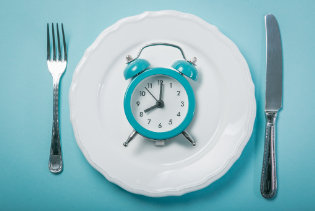
How do you do intermittent fasting to lose weight?
The most common way to fast is to eat the last meal of the day around 9:00 or 10:00 at night (dinner), go to sleep, and not eat anything else until 1:00 or 2:00: 00 the next day. This results in about 14 or 16 hours of fasting. During this time, our body will be burning fat to obtain energy (if we are following a low-calorie diet). It is not necessary to practice fasting every day of the week. It is normal to fast only on some days of the week. For example, two days (which do not have to be consecutive). This is known as the 5 2 fast (the fast is done for 2 days, but not the other 5 of the week). Then, we will look at other types of intermittent fasting , since there are several combinations.
There are several different forms of intermittent fasting , but they are all based on regular periods of eating and fasting. For example, you could try eating only eight hours a day and fasting the rest of the time. Or you can choose to eat just one meal a day, two days a week. There are many different types of schedules for your intermittent fasting. Scientist Metson states that, after hours without eating, the body empties its glucose reserves and begins to burn fat. He calls this a metabolic shift .
"Intermittent fasting goes against the normal eating pattern of most Americans, who eat during waking hours. If someone eats three meals a day plus snacks and doesn't exercise, they use up those calories every time they eat, in instead of burning their fat reserves.
So, extended intermittent fasting works by extending the time that your body has burned the calories from your last meal and begins burning fat.
Types of intermittent fasting
You have already understood intermittent fasting and how to do it , right? It is basically fasting and eating for a period of time. Now, fasting times ⏰ and days can vary according to preferences. The good thing about this method is that you don't have to stick to specific foods, although fasting and a keto diet can work very well . You can use fasting as little or as often as you feel necessary. You can even choose to do it at different times throughout the year (you can do it for days, months or all year round). All fasting methods have been shown to be effective, but through trial and error, you will find the system that works best for you. We present the classification of intermittent fasting by type. Take note!
12 hour daily fast
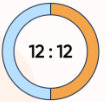
This is the easiest way to fast. You can incorporate this fasting system into your daily life because it is very sustainable. It consists of having dinner around 10:00 at night and not eating again until 10:00 the next morning, which is 12 hours of fasting . Dinner time varies in each country. In some countries, dinner is eaten at 7:00 in the afternoon. The important thing is that 12 hours pass until the next meal (without snacking in between).
There are two ways to do basic fasting:
- Postpone the first meal of the next day.
- Advance the last meal of the day (dinner).
You can also combine both 12-hour fasting strategies with benefits . You can do this fast daily, although some people do it seasonally, depending on how it suits their schedule and circumstances.
14 hour fast
It consists of adding two more hours of fasting compared to the previous one. For example, having dinner at 10:00 at night and not eating again until 12:00 in the morning. This is also called 14 10 fasting (14 hours of fasting and 10 to eat).
Fasting 18 6
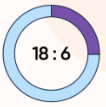
The 18-hour fast is one of the most popular intermittent fasts that you can easily incorporate into your daily life. Simply fast for 18 hours and limit your eating to 6 hours a day, during which you can eat three meals.
As an example, your last meal could be dinner at 6:00 p.m. and breakfast at 12:00 a.m. the next day. You can eat for the next 6 hours and start the cycle again. You can change the meal time according to your schedule: you can eat earlier or later if you wish.
18 6 fasting is very manageable and recommended for most people who want to lose weight.
Fasting 16 8
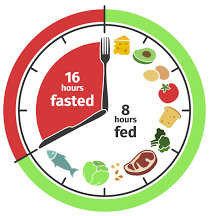
If you see that there are too many hours without eating, you can modify the 18/6 intermittent fasting to convert it to 16/8 intermittent fasting . You would finish your last meal at 6:00 p.m. and eat again at 10:00 a.m. the next day (breakfast). In this case, it is 16 hours of fasting and you can eat for 8 hours of the day.
Fasting 20 4
The 20:4 is a time-restricted eating model based on a 20-hour fast and a 4-hour eating period . Normally, you can eat as much as you want during the four-hour "feast." The key is that by default it is difficult to consume too many calories in such a short time.
Although the four-hour eating period is usually in the evening, you can actually choose any time of day that suits you. For example, you can eat two meals between 2:00 p.m. and 6:00 p.m. and fast for the remaining 20 hours. This would be suitable for those who believe in intermittent fasting, are busy day workers and do not have time to eat, do not feel hungry during the day or feel that eating makes them less productive and slow.
You can also use the 20 4 fast for special occasions, such as going out to dinner or preparing a delicious feast with friends and family.
Very long fasts
Very long fasts are usually not used daily, but from time to time. This type of fasting might be suitable for those who feel they cannot commit to a daily fast but want to fit it into a weekly, monthly or yearly schedule.
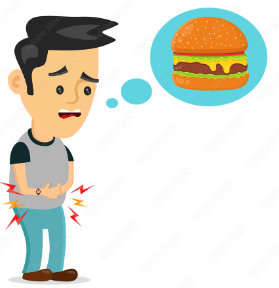
If you already practice a restricted diet, you can also incorporate prolonged fasting during some periods of the year to improve ketosis. Let's look at examples of long fasts:
• 24-hour fasting : Fasting 24 hours a day means going without food for a whole day. Obviously, this should only be done in specific cases.
How to fast 24 hours between each meal? For example, you can eat at 7:00 p.m. on the first day and fast until 7:00 p.m. the next day. You can also eat earlier (breakfast or lunch) and fast for 24 hours until the next day. The idea is that you eat one meal every day, but your body is starving for a long period of time. This type of fasting is usually done once or twice a week (and only at specific times of the year). If done this way, 24-hour fasting has benefits .
• Fasting for 48 hours : This consists of fasting for two days in a row. Fasting for 48 hours is excessive and is not recommended in any case. For most people, this method will cause irritation, insomnia, lack of energy and concentration. You can consult with doctors, but practically all of them will recommend that you not do it. Better not go to the extreme of going two days without eating.
• 36-hour fast : It is a somewhat less extreme alternative to the 48-hour fast. This is an extended version of the 24-hour fast. You have to have dinner on the first day, fast all day on the second day, and have breakfast on the third day. This type of fasting can help those starting a ketosis diet or deepen ketosis for those already following this diet. It is recommended to do this fast infrequently. For example, once a week, month or year and only on a specific basis.
Alternate fasting days and eating days
As the name suggests, this involves doing one day of fasting and another day of normal eating. On meal days, you can eat your food normally. The next day, you will not eat anything. This long-term approach is too intensive and may not be sustainable. It is also recommended to try eating only 500 calories on fasting days (this way, we would not do a complete fast).
Spontaneous fasting or skipping meals
This system is advisable for anyone who is unsure about intermittent fasting or who is distressed by restrictive fasting periods. This is like a gentle introduction to intermittent fasting that fits your lifestyle and body. It's a great method for those who don't like to be restricted or feel hopeless if they don't meet the dietary criteria.
It involves skipping meals if you are not hungry or if you are too busy to eat. The truth is that cooking and eating take a surprising amount of time. If you adopt this way of eating, you will have time to work on other things. Maybe you can replace the meal with an activity you enjoy, such as taking a walk or practicing yoga.
Spontaneously skipping meals is an effective way to reestablish the common belief that we need to eat three meals a day. If you skip a meal once in a while, you won't starve!
Intermittent fasting 5 2

The 5:2 fast is one of the most efficient and easiest to do. It consists of fasting 2 days a week (and eating normally on the other 5 days). It is not necessary to stop eating completely on the two days of fasting, but women and men can limit their consumption to 500-600 calories on those two days. You can distribute these allowed calories over several meals throughout the day or consume them all at once. During the remaining five days of the week, there is no need to restrict food.
For fasting, you can choose the two days of the week you prefer. Just make sure it's not two days in a row. For example, you can reserve fasts for Tuesday and Saturday. On these two days, consume only about 500 or 600 calories, which you can achieve with two 250-calorie meals or a single 500-calorie meal.
Which of these nutrition systems is better?
Remember that it is always important to consult a doctor before starting any intermittent fasting method. Once you get permission from the professional, starting to try fasts is easy. You can choose an approach that limits your daily eating to a period of six to eight hours each day . For example, you can try the 16/8 fast that we explained, which consists of eating for eight hours and fasting for 16 hours.
While some people find it easy to follow this fasting pattern long-term, one study (which was not specifically designed to look at intermittent fasting) found that restricting how often you eat each day does not prevent increased weight over time, or that offers significant weight loss results. According to research, reducing the number of large meals or eating smaller meals may be associated with less weight gain or even weight loss over time.
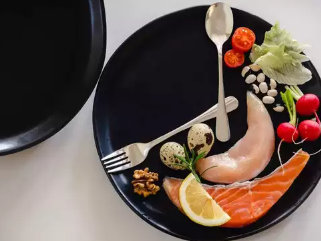
Another recommended intermittent fasting plan is the 5:2 type , which as we saw involves eating regularly five days a week. On the other two days, you limit yourself to one 500 to 600 calorie meal. An example would be to eat normally every day of the week except Mondays and Thursdays, which would be your only calorie restriction days.
Longer periods without eating, such as fasts of 24, 36, 48 and 72 hours , are not necessarily better and can even be dangerous. If you don't eat for too long, your body may start storing more fat in response to hunger.
Research shows that it can take two to four weeks for the body to adapt to intermittent fasting. You may feel hungry or cranky as you adjust to your new eating routine. However, subjects who go through an adaptation period tend to follow the plan because they feel better.
The benefits of intermittent fasting
Perhaps not eating anything at a certain time each day or week can cause rejection in some people. However, more popular fasting methods, such as alternating, 5:2, or 16:8, may have some advantages. Studies show that daily fasting is as effective as a regular low-calorie diet for weight loss. This seems reasonable, since reducing your calorie intake should help you lose weight. Intermittent fasting has benefits .
Can fasting improve your health? Weight loss and physical activity help reduce the risk of obesity-related diseases, such as diabetes, sleep apnea, and some cancers. Under these conditions, intermittent fasting appears to be as beneficial as any other diet that reduces total calories. Some research suggests that intermittent fasting may be more helpful than other diets in reducing inflammation and improving inflammation-related conditions:
• Alzheimer's disease
• Arthritis
• Asthma
• Multiple sclerosis
• Paralysis
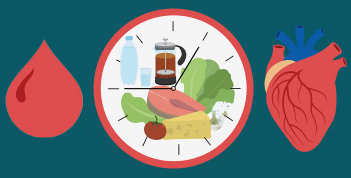
Other benefits of fasting
Studies show that fasting does more than just burn fat. One of the investigations revealed data on several health benefits associated with this practice. These include a longer life, a slimmer body, and a clearer mind.
"Many things that happen during intermittent fasting can protect the body from chronic diseases such as type 2 diabetes, heart disease, age-related neurodegenerative disorders, even inflammatory bowel disease and many cancers."
Among the benefits of intermittent fasting that research has revealed so far are the following:
• Improves cardiovascular health . Fasting can improve resting blood pressure and heart rate, as well as other heart-related measures.
• Increases physical performance . It has been proven that young men who fasted for 16 hours showed fat loss while maintaining muscle mass. Mice fed every other day had better running endurance.
• Thought and memory . Various research has shown that fasting improves working memory in animals and verbal memory in adults.
• Contribuye a la salud de los tejidos. En estudios con animales, el ayuno intermitente redujo el daño en los tejidos durante las cirugías y mejoró los resultados de operaciones.
• It can combat type 2 diabetes and obesity . Fasting prevented obesity in animal experiments. Additionally, in six short studies, obese adults lost weight through intermittent fasting. People with type 2 diabetes may also benefit; Most available research shows that intermittent fasting can help people lose weight and reduce glucose and insulin levels, while reducing insulin resistance, lowering leptin levels, and increasing adiponectin levels. Research has shown that some patients who practiced intermittent fasting under medical supervision were able to reverse the need for insulin therapy.

What foods are allowed on a fasting diet plan?
You can drink water and calorie-free drinks , such as black coffee and tea, when you are not eating. Eat normally when allowed. Of course, "eating normally" during meal periods does not mean going crazy with food. Research shows that you probably won't lose weight or be healthier if you eat high-calorie junk food, large portions of fried foods, and sweets during your mealtime (even if you're fasting).
Some experts prefer intermittent fasting because it allows you to eat and enjoy a variety of foods. Sharing good, nutritious food with others and enjoying a meal is satisfying and promotes good health. Most nutritionists consider the Mediterranean diet a good eating plan, whether you try intermittent fasting or not. You can hardly go wrong with leafy greens, healthy fats, lean proteins, and unrefined complex carbohydrates like whole grains.
Is intermittent fasting healthy and safe?

Some try this method to control their weight. Others use it to prevent certain chronic diseases such as irritable bowel syndrome, high cholesterol or arthritis. However, intermittent fasting is not for everyone. Experts emphasize that before trying intermittent fasting (or any diet), you should first consult with your health provider. Who should avoid intermittent fasting? :
• Children and young people under 18 years of age.
• Women who are pregnant or breastfeeding.
• People with type 1 diabetes who take insulin. Although a growing number of clinical studies have shown that intermittent fasting is safe for people with type 2 diabetes, no studies have been conducted in people with type 2 diabetes.
"Because people with type 1 diabetes take insulin, there is concern that eating irregularly on an empty stomach could lead to dangerous levels of hypoglycemia during the fasting period."
• Those with a history of eating disorders.
People who do not fall into these categories could safely fast intermittently. These people can continue with this regimen indefinitely. Fasting to burn fat can be a lifestyle change and bring benefits.
Remember that intermittent fasting can affect different people differently. Talk to your doctor if you start experiencing anxiety, headaches, nausea, or other unusual symptoms after starting intermittent fasting.
Can there be side effects?
Yes, it is important to note that intermittent fasting could have unpleasant side effects, but these usually disappear within a month. Side effects may be the following:
• Hunger.
• Fatigue.
• Insomnia.
• Nausea.
• Headache.
Fasting is safe for many people, but not all. If you're pregnant or breastfeeding, skipping meals may not be the best way to control your weight. If you have kidney stones, gastroesophageal reflux, diabetes, or other medical problems, talk to your doctor before starting any fasting plan.
Frequent questions
Finally, we present a battery of questions to answer the most frequently asked questions about losing weight with intermittent fasting . Have you asked yourself any of the following questions?
Is 14-hour intermittent fasting advisable for women?
Yes, this is one of the least aggressive and easiest fasts to do. You can fast from 10:00 at night to 12:00 in the morning. Pregnant or breastfeeding women should not do it.
Can I lose 10 kilos in a month with intermittent fasting?
It is not recommended that you lose 10 kg in a month with intermittent fasting or any other diet method. Ten kilos is too much weight in such a short time. You will only create a health problem and a serious subsequent rebound effect. Two kilos a month is a correct amount of weight to lose when you want to lose weight.
Is it good to combine intermittent fasting and the keto diet?
Yes, intermittent fasting is one of the best complements to a keto diet. This diet, also called the ketogenic diet, consists of almost completely eliminating carbohydrates to eat only proteins and fats. The body, faced with a lack of glucose, will use a pathway called ketosis to produce ketones and obtain energy. If you are doing this diet, you can include fasting a couple of times a week to enhance calorie reduction.
What can I expect from a 5-day fast in lost kilos?
To begin with, it is not recommended to do complete or aggressive fasts on 5 days of the week. Yes, you can try to only eliminate breakfast on 5 days of the week. Let's say you were eating a 400-calorie breakfast and you decided to eliminate this breakfast five times a week.
We know that 1 kg of human fat is 7716 calories. If you eliminate 5 breakfasts of 400 calories each, you will be removing 2000 calories from your diet in a week. That is, you would lose 26% of 1 kg of fat. Thus, five days without breakfast would be equivalent to approximately 260 grams of fat burned. In a month following this procedure, you could burn just over 1 kg of fat.
What is circadian intermittent fasting?
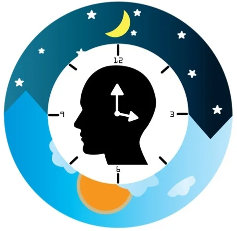
This methodology consists of fasting to accommodate our body's natural biological clock (circadian rhythm). This "clock" is located in our brain, in the hypothalamus area . This part is responsible for generating hormones that promote sleep when sunlight goes out, for example.
The 16 8 method of intermittent fasting can adjust to circadian rhythms by eating during daylight hours. For example, you could eat during the 8 hours that go from 10:00 in the morning to 18:00 in the afternoon. This approach serves to optimize metabolic function, immune system response, and health. To enhance the benefits, it is also recommended to acquire healthy sleeping habits by limiting the hours of exposure to blue screens (mobile phones, computers...) a few hours before going to sleep. Ancestrally, darkness signaled to our body that the time had come to rest and repair itself.
You might be interested in reading:
What is a menu with intermittent fasting like?
Many also want to see an example of an intermittent fasting diet . One of the most requested menus is the example of intermittent fasting 16 8 . So let's see it.
Example of intermittent fasting 16 8
• 5:00-7:00 Coffee or tea without cream or sweetener.
• 12:00 (breakfast): Egg and vegetable empanada with fruit garnish.
• 2:00 p.m. (lunch): Stir-fried chicken and mixed vegetables with brown rice.
• 16:00 (snack): Yogurt and/or mixed nuts.
• 18:00 (dinner): Meatballs with whole wheat pasta and salad.
• 20:00 (snack): Almonds covered in dark chocolate or some dark chocolate bars.
Example of fasting and keto 16 8
This is a meal plan for the day on a 16:8 ketogenic diet and intermittent fasting (high-fat, high-protein, low-carb diet).
• 5:00-7:00: Coffee or tea without cream or sweetener.
• 12:00 (breakfast): Instant coffee, scrambled eggs with vegetables, bacon and avocado.
• 2:00 p.m. (lunch): Salmon with lemon butter and a salad as a side dish.
• 16:00 (snack): String cheese.
• 6:00 p.m. (dinner): Cheeseburger, lettuce leaves (without bun) and roasted broccoli.
• 19:00 (second snack): Mixed nuts.
Intermittent fasting 5 2 example in PDF
To remember, in this method, you have to eat as you normally would five days a week. Two days of the week, you will fast. On fasting days, it is recommended to eat only 25% of maintenance calories (which is usually 500 calories for an adult). Let's see an example of a 5/2 fast with a menu for 7 days a week.
DAY 1: 1639 CALORIES
• Breakfast (312 calories) : Cream cheese and raspberries on toast.

- Crusty whole wheat toast with cream cheese and fresh raspberries.
- Two 72 g slices of whole wheat bread.
- 30 grams of cream cheese.
- 20 raspberries (100 g).
• Lunch (633 calories) : Smoked salmon, avocado and egg salad.
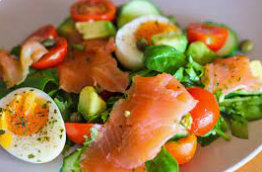
You need lettuce, cherry tomatoes, red onion, avocado, a hard-boiled egg and smoked salmon. Pour creamy dill sauce on top and sprinkle with walnuts.
• Dinner (693 calories) : Chicken rolls and potato pieces.
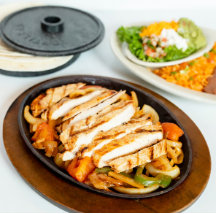
It is a classic Mexican recipe for 5x2 fasting that family and friends will always appreciate... Accompany the fajitas with 120 grams of frozen potato pieces.
Take advantage of leftovers : Make your 5:2 nutritional plan as simple as possible. If you can, prepare double amounts for meals at night. The other half will serve you for a quick lunch the next day. For example, Monday's chicken fajitas can be eaten (hot or cold) for lunch on Tuesday... The chicken you make on Friday will be a quick and hot lunch for Saturday... Do you know what we mean?
DAY 2: 1553 CALORIES
• Breakfast (367 calories) : A tomato and mushroom omelet with beans.

The tortilla is super easy to make on the grill. It will be the perfect food to start the day. Serve with baked beans for extra protein (or save the beans for later). What do you need?
- Two eggs (or 112 g).
- A 15 ml tablespoon of skimmed milk.
- 4 sliced mushrooms (28 g).
- 4 cherry tomatoes cut in half (60 g).
- A teaspoon of oil (5 ml).
- Half a can of cooked beans (200 g).
• Lunch (633 calories) : Chicken fajitas left over from the previous day.

You can eat these chicken rolls hot or cold. Eat a banana for dessert.
• Dinner (553 calories) : A quick menu of bolognese with penne and parmesan.

This is a quick bolognese sauce recipe to fill you up for dinner. You can save one serving for tomorrow's lunch and one more to put in the freezer. Serve half the menu with cooked penne pasta and freshly grated Parmesan cheese for dinner.
- Two servings of a quick bolognese recipe.
- Penne pasta (75 grams weighed dry).
- A 15 gram spoonful of Parmesan cheese.
Snacks, Cravings, and Drinks During the 5:2 Diet : Depending on your daily maintenance calories, you may still be able to consume additional foods and drinks. Suppose you are a 41-year-old woman of average height (160 cm) and average weight (70 kilos), and you work in an office (moderately sedentary activity). You would need about 1832 calories to maintain your current weight. So, you would have about 232 extra calories to eat or drink each day:
- 3 cups of tea with sugar + 4 ounces of chocolate, which is 224 calories.
- A couple of small glasses of dry white wine.
DAY 3: 493 CALORIES (FASTING)
• Breakfast (171 calories) : Some whole wheat toast spread with peanut butter.
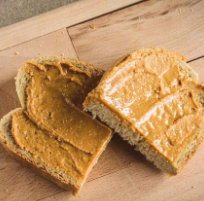
Just toast a slice of your favorite whole wheat bread and put peanut butter on top. This is great for getting slow-release energy and staying full throughout the morning.
- A 36 g slice of toasted whole wheat bread.
- A 15 g tablespoon of peanut butter.
• Lunch (192 calories) : You can eat the leftover bolognese from the night before and add some chickpeas.

We added 60 g of chickpeas to the bolognese left over from yesterday, reheated the food and served.
- A serving of the quick bolognese recipe.
- Half a can of drained chickpeas (about 60 g).
• Dinner (130 calories) : Prepare chicken and noodle soup.

This quick and easy menu consists of chicken noodle soup. It is a simple, delicious and excellent dish for dinner because of its low calories.
DAY 4: 1615 CALORIES
• Breakfast (329 calories) : Delicious grilled BLT sandwich.

It's like a classic BLT sandwich, but with whole wheat bread and mayonnaise (you can toast the bread if you want).
- Two slices of whole wheat bread (72 g).
- Two pieces of low-fat bacon (66 g).
- Two whole leaves of lettuce (20 g).
- One tomato (90 g).
- A teaspoon of mayonnaise (5 g).
• Lunch (500 calories) : Greek salad.
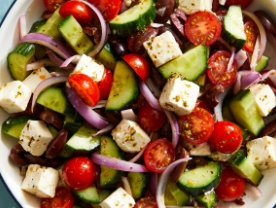
Chop all the ingredients for a simple but delicious Greek salad. Eat a banana for dessert to complete the meal.
- The Greek salad usually has lettuce, tomato, avocado, olives, feta cheese, red onion, yellow pepper, toasted bread, low-fat vinaigrette and olive oil.
• Dinner (786 calories) : Sausage with mashed potatoes and onion sauce.
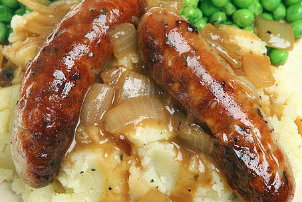
Make this super simple puree. Serve it with oriental onion sauce, fried sausages and steamed vegetables of your choice.
- 3 pork sausages (135 g).
- 200 g of Maris Piper potatoes.
- A sliced onion (180 g).
- Two teaspoons of meat sauce granules (8 g).
- A teaspoon of 5 ml of oil.
- A bag of steamed vegetables (160 g).
How to combine meals in the 5:2 fasting plan : You can follow the complete 7-day plan that we present or choose your favorite foods to create your perfect diet. Meals can easily be repeated for several days. So, if you want to eat the same breakfast for several days, for example, you can do that.
DAY 5: 1626 CALORIES
• Breakfast (404 calories) : A toasted bagel with soft cheese.

Cut the whole wheat rolls in half, toast them, spread them with cream cheese and enjoy. Serve breakfast with an apple (or save this piece of fruit for later).
- A whole wheat roll (90 g).
- 30 grams of cream cheese.
- An apple (80 grams).
• Lunch (535 calories) : Potatoes with cheese and beans.

You have to cook baked potato and sprinkle with baked beans and cheese. The other ingredients will make a simple salad.
- A roast potato (200 g).
- Half a can of cooked beans (200 g).
- 30 grams of mature Cheddar cheese.
- A mixed leaf salad (80 g).
- A quarter of cucumber (100 g).
- A teaspoon of balsamic dressing (5 ml).
• Dinner (687 calories) : Jalfrezi with rice and poppadoms.

Make this Chicken Jalfrezi recipe and save half for a quick lunch the next morning (that you can take to work). Serve this meal in the evening with 2 poppadoms and 2 teaspoons of mango chutney.
- A serving of Chicken Jalfrezi with basmati rice.
- Two soda tips (16 g).
- Two teaspoons of mango chutney (32 g).
*Note : Poppadom is a kind of flat and thin plan from India.
DAY 6: 503 CALORIES (FASTING)
• Breakfast (180 calories) : Oatmeal porridge with blueberries.
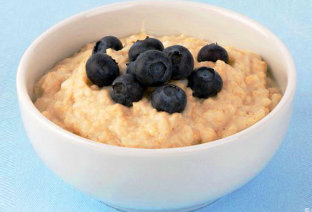
Prepare 30 grams of oats with semi-skimmed milk and water (to reduce calories) and add fresh blueberries.
- 30 grams of oats.
- 75 ml of skimmed milk.
- 100 ml of water.
- 50 blueberries.
• Lunch (118 calories) : Fresh vegetable soup.

Buy basic pre-mixed vegetable soup or make your own (try to keep the recipe low in calories). Heat the soup and enjoy it.
- A fresh vegetable soup from the supermarket (about 300 g).
• Dinner (205 calories) : Fried cod with broccoli.
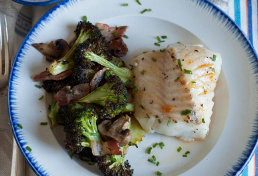
Baked cod with broccoli is very easy to make. Just throw everything in a pan and cook the ingredients together. If you want, you can replace the cod with any other fish of your choice.
- 80 grams of broccoli.
- A 140 g cod fillet.
- A garlic clove.
- A teaspoon of 5 ml of oil.
- Lemon juice to taste.
DAY 7: 1645 CALORIES
• Breakfast (454 calories) : Spinach omelet superfood (babies).
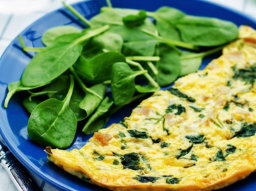
Do you like tortilla? Here is an easy to prepare, tasty and healthy one. It only has 100 grams of tender baby spinach, 3 medium eggs, a tablespoon of semi-skimmed milk (or a non-dairy alternative), a slice of whole wheat sourdough (40 grams), 2 tablespoons of extra virgin olive oil and a little bit of pepper and salt.
• Lunch (621 calories) : Chicken Jalfrezi and rice left over from the day before.

Simply reheat and eat the leftover chicken and rice from day five. How simple! Later, enjoy some fresh berries as an appetizer or dessert after lunch.
- A serving of Chicken Jalfrezi with rice.
- 20 raspberries.
- 50 blueberries.
• Dinner (570 calories) : Breaded tongue fish with lemon, french fries and peas.
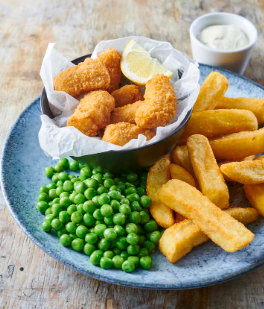
Make your life easier and buy a pre-fried fish at the supermarket and accompany it with baked fries. It is a very rich menu.
- A 142 g fish fillet breaded and with lemon.
- Oven fried potatoes (150 g of frozen potatoes).
- 80 grams of peas.
Make these 5:2 fasting menus work for you. The 5:2 meal plan covers the full 7 days to make sure your fasting days count and you lose the weight you want quickly and efficiently. Try these delicious foods!
Whether you follow the fast with 5 days of food and 2 days of restriction or any other, remember that calories and food quality are still very important. Don't neglect this! What is intermittent fasting for? It is a way to cleanse the body, lose weight and complement any fat loss diet. Enjoy experimenting with different types of fasting to see which one you like best.









